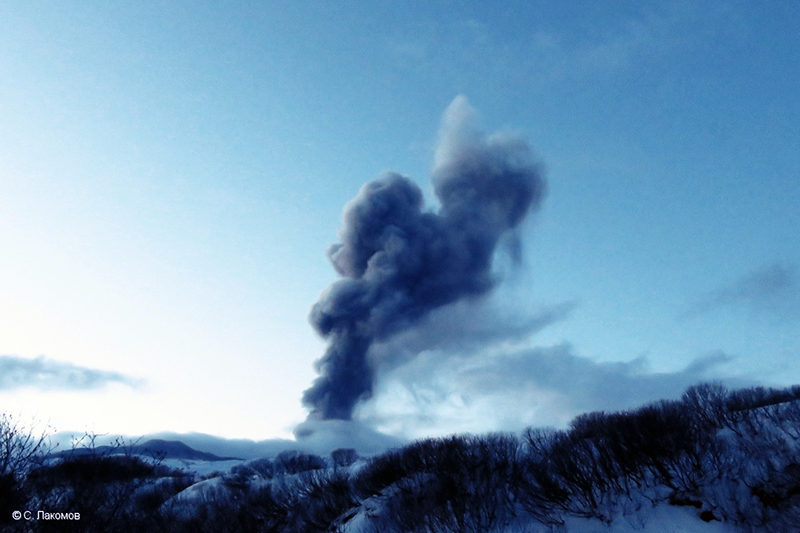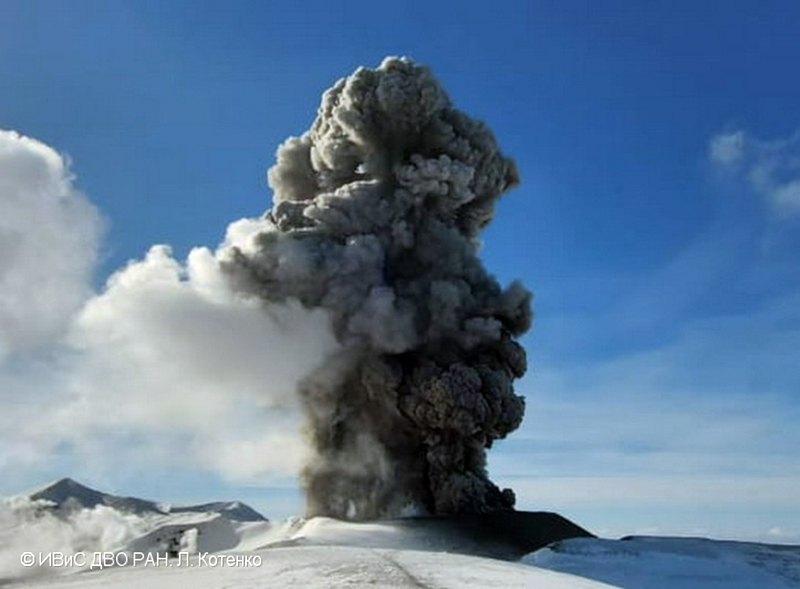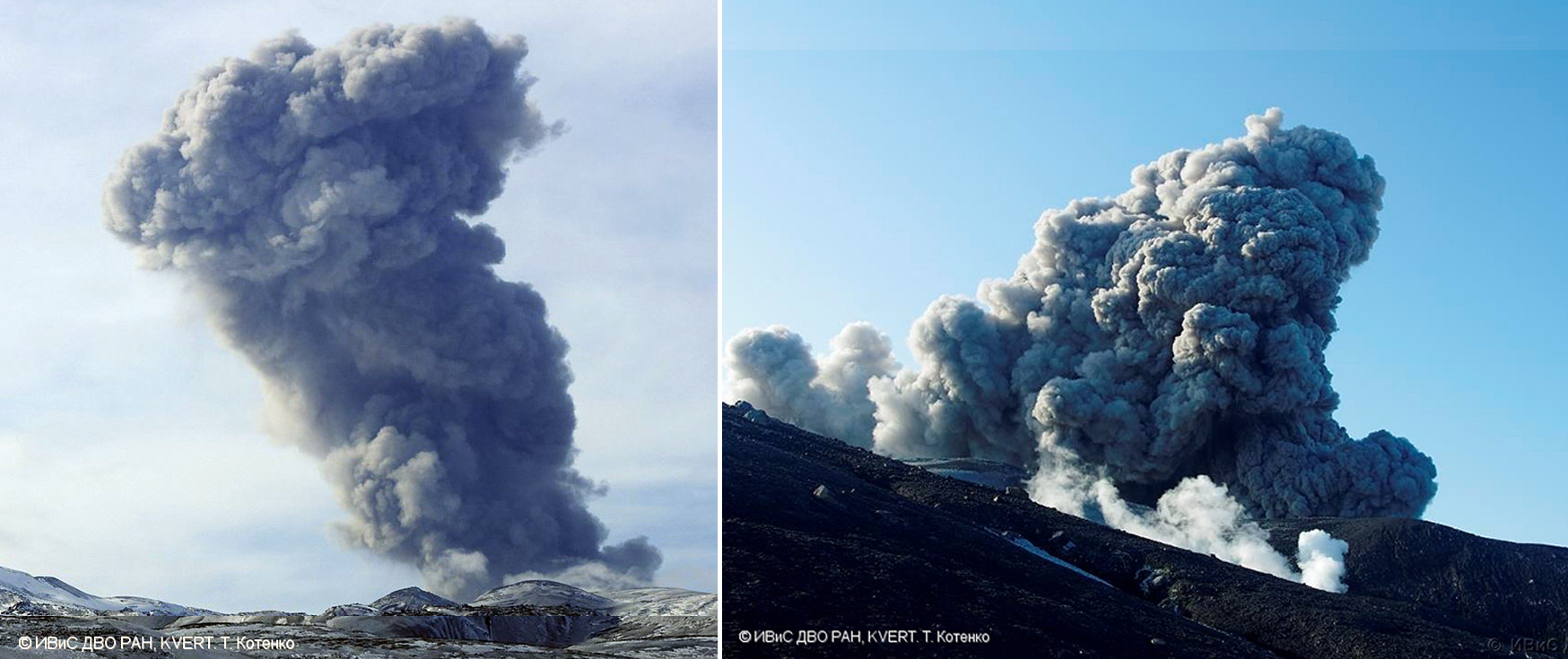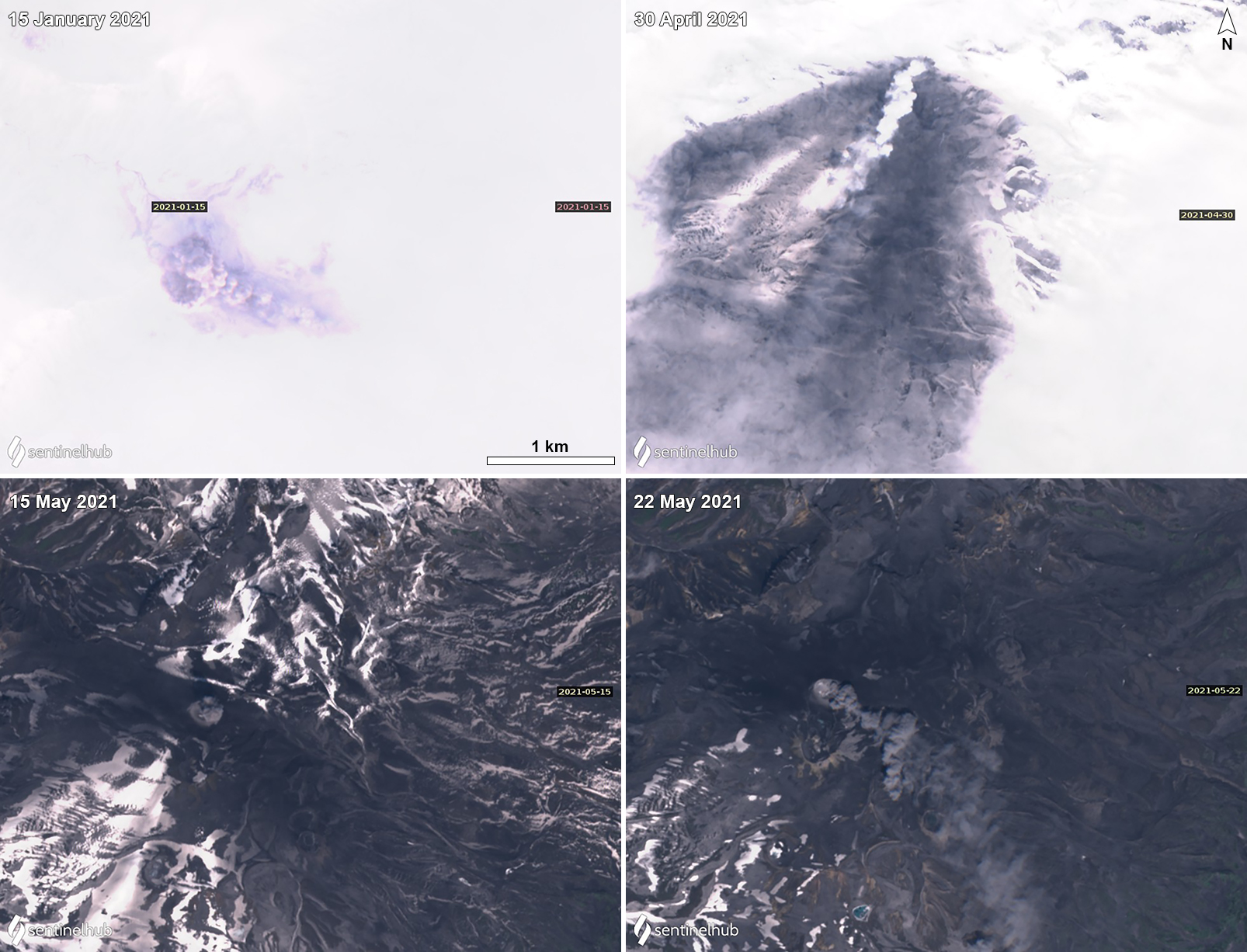Report on Ebeko (Russia) — June 2021
Bulletin of the Global Volcanism Network, vol. 46, no. 6 (June 2021)
Managing Editor: Edward Venzke.
Edited by Kadie L. Bennis.
Ebeko (Russia) Frequent explosions, ash plumes, and ashfall persist during December 2020-May 2021
Please cite this report as:
Global Volcanism Program, 2021. Report on Ebeko (Russia) (Bennis, K.L., and Venzke, E., eds.). Bulletin of the Global Volcanism Network, 46:6. Smithsonian Institution. https://doi.org/10.5479/si.GVP.BGVN202106-290380
Ebeko
Russia
50.686°N, 156.014°E; summit elev. 1103 m
All times are local (unless otherwise noted)
Ebeko is located on the N end of the Paramushir Island in the Kuril Islands and consists of three summit craters aligned SSW-NNE. Its current eruption has been ongoing since October 2016 and has recently been characterized by explosions that generate ash plumes and some ashfall on the flanks (BGVN 45:12). Similar activity of near daily explosions and ash plumes continued during this reporting period of December 2020 through May 2021 based on information from the Kamchatka Volcanic Eruptions Response Team (KVERT) and satellite data.
During December 2020 frequent explosions, reported by volcanologists in Severo-Kurilsk (7 km ESE) viewing video images, generated ash plumes to 2.1-5 km altitude that drifted as far as 10 km E, SE, NW, S, and NE. Satellite data often showed that the volcano was obscured by clouds. A thermal anomaly was noted in satellite data during 18-19 December. On 19 December an explosion produced an ash plume that rose to 4 km altitude and drifted 5 km E (figure 32).
 |
Figure 32. Photo of a gray ash plume from Ebeko on 19 December 2020 rising to 4 km altitude. Photo by S. Lakomov (color corrected), courtesy of IVS FEB RAS, KVERT. |
Similar activity was reported during January and February 2021, characterized by explosions and ash plumes that rose to 1.5-4.5 km altitude and drifted as far as 5 km in different directions. On 8, 20, and 24 January, and 9, 15, 20, and 26 February, ashfall was detected at Severo-Kurilsk. An explosion on 9 February produced an ash plume that rose to 3 km altitude and drifted 3-5 km N and E (figure 33). A weak thermal anomaly was reported over the volcano on 17 and 20 February.
 |
Figure 33. Photo of a dark gray ash plume from Ebeko on 9 February 2021 rising to 3 km altitude. Photo by L. Kotenko (color corrected), courtesy of IVS FEB RAS, KVERT. |
During March through May explosions continued with frequent explosions and ash plumes rising to 1.5-4.5 km altitude and drifting as far as 5 km in multiple directions. Ashfall was detected in Severo-Kurilsk on 2, 7-8, 12, and 24 March, and 15-16 April. On 15 March and 7 April explosions generated ash plumes up to 2 km altitude and drifted 5 km SW and SE, respectively (figure 34). Satellite data showed a thermal anomaly over the volcano on 5, 14-15, 19-20, and 23 May.
 |
Figure 34. Photos of strong ash plumes from Ebeko on 15 March (left) and 7 April (right) 2021 rising to 2 km altitude. Photos by T. Kotenko (left color corrected), IVS FEB RAS, KVERT. |
According to the MIROVA (Middle InfraRed Observation of Volcanic Activity) graph (Log Radiative Power), only a single thermal anomaly was detected during early May since September 2020. Though Sentinel-2 infrared satellite imagery did not detect a thermal anomaly at the summit, the natural color images showed intermittent gray ash plumes drifting SE and SW and the resulting ash deposits (dark gray) on the snowy white flanks (figure 35).
Geological Summary. The flat-topped summit of the central cone of Ebeko volcano, one of the most active in the Kuril Islands, occupies the northern end of Paramushir Island. Three summit craters located along a SSW-NNE line form Ebeko volcano proper, at the northern end of a complex of five volcanic cones. Blocky lava flows extend west from Ebeko and SE from the neighboring Nezametnyi cone. The eastern part of the southern crater contains strong solfataras and a large boiling spring. The central crater is filled by a lake about 20 m deep whose shores are lined with steaming solfataras; the northern crater lies across a narrow, low barrier from the central crater and contains a small, cold crescentic lake. Historical activity, recorded since the late-18th century, has been restricted to small-to-moderate explosive eruptions from the summit craters. Intense fumarolic activity occurs in the summit craters, on the outer flanks of the cone, and in lateral explosion craters.
Information Contacts: Kamchatka Volcanic Eruptions Response Team (KVERT), Far Eastern Branch, Russian Academy of Sciences, 9 Piip Blvd., Petropavlovsk-Kamchatsky, 683006, Russia (URL: http://www.kscnet.ru/ivs/kvert/); MIROVA (Middle InfraRed Observation of Volcanic Activity), a collaborative project between the Universities of Turin and Florence (Italy) supported by the Centre for Volcanic Risk of the Italian Civil Protection Department (URL: http://www.mirovaweb.it/); Sentinel Hub Playground (URL: https://www.sentinel-hub.com/explore/sentinel-playground).


